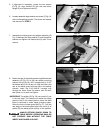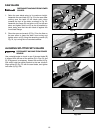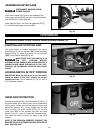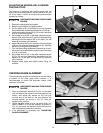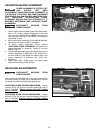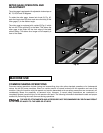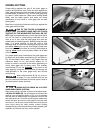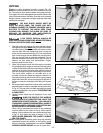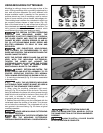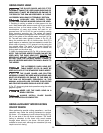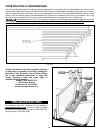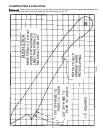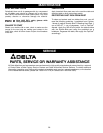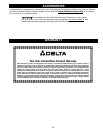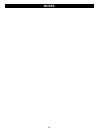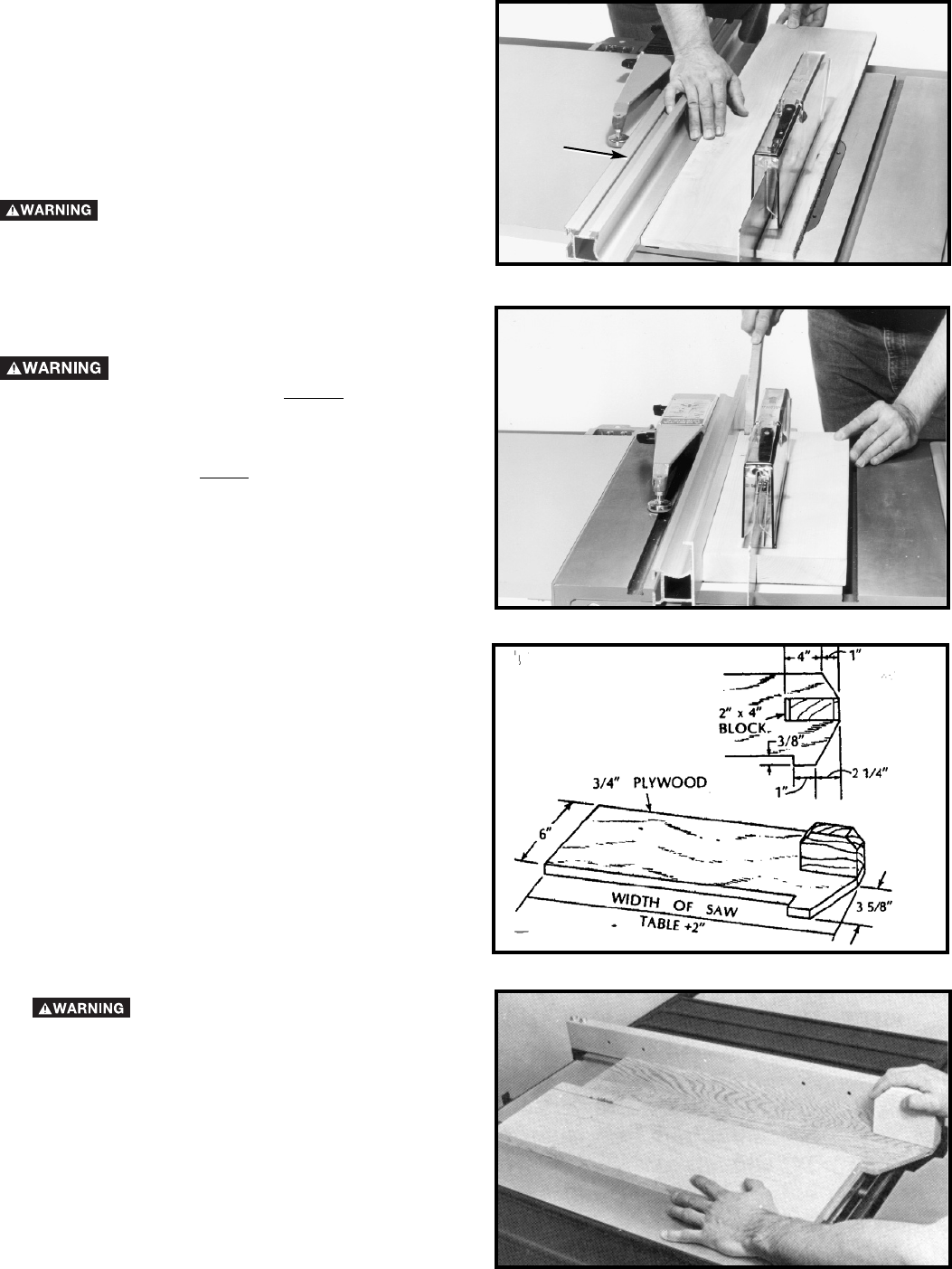
23
Ripping is cutting lengthwise through a board, (Fig. 45).
NOTE: Be sure the material to be cut is seasoned, dry and
flat. The rip fence (A) is used to position and guide the work.
One edge of the work rides against the rip fence while the flat
side of the board rests on the table. Since the work is pushed
along the fence, it must have a straight edge and make solid
contact with the table.
THE SAW BLADE GUARD MUST BE
USED. ON DELTA SAWS, THE GUARD HAS ANTI-
KICKBACK FINGERS TO PREVENT KICKBACK AND A
SPLITTER TO PREVENT THE WOOD KERF FROM
CLOSING AND BINDING THE BLADE. BE SURE TO
REPLACE OR SHARPEN THE ANTI-KICKBACK
DEVICES WHEN THE POINTS BECOME DULL.
A RIP FENCE SHOULD ALWAYS BE
USED FOR RIPPING OPERATIONS. NEVER
PERFORM A
RIPPING OPERATION FREE-HAND.
1. Start the motor and advance the work holding it down
and against the fence. Never stand in the line of the saw
cut when ripping. When the rip width is 6 inches or wider,
hold the work with both hands and push it along the
fence and into the saw blade (Fig. 45). The work should
then be fed through the saw blade with the right hand.
Only use the left hand to guide the workpiece. Do not
feed the workpiece with the left hand. After the work is
beyond the saw blade and anti-kickback fingers,
remove hands from the work.
2. When this is done the work will either stay on the table,
tilt up slightly and be caught by the end of the rear guard,
or slide off the table to the floor. Alternately, the feed can
continue to the end of the table, after which the work is
lifted and brought along the outside edge of the fence.
The cut-off stock remains on the table and is not
touched until the saw blade has stopped, unless it is a
large piece allowing safe removal. When ripping boards
longer than three feet, use a work support at the rear of
the saw to keep the workpiece from falling off the saw
table.
3. If the ripped work is less than 6 inches wide, a push stick
should always be used to complete the feed, as shown
in Fig. 46. The push stick can easily be made from scrap
material as explained in the section “CONSTRUCTING
A PUSH STICK.”
4. Ripping narrow pieces can be dangerous if not done
carefully.
WHEN THE PIECE IS TOO NARROW
FOR A PUSH STICK TO BE EFFECTIVE - AND IF THE
WORKPIECE IS SHORT ENOUGH - YOU CAN USE A
PUSHBOARD. WHEN RIPPING MATERIAL UNDER 2
INCHES IN WIDTH, ORDINARY PUSH STICKS MAY
INTERFERE WITH THE BLADE GUARD.
When using a pushboard, the width of the pushboard
must be added to the width of the rip fence position
setting. A flat pushboard can be constructed as shown
in Fig. 47 and should be used as shown in Fig. 48.
NOTE: GUARD REMOVED FOR CLARITY. ALWAYS
USE THE GUARD.
NOTE: Some special operations (when using the moulding
cutterhead) require the addition of an auxiliary wood
facing to the fence, as explained in the section “USING
AUXILIARY WOOD FACING” and use of a push stick.
Fig. 45
A
Fig. 48
Fig. 46
Fig. 47
RIPPING



